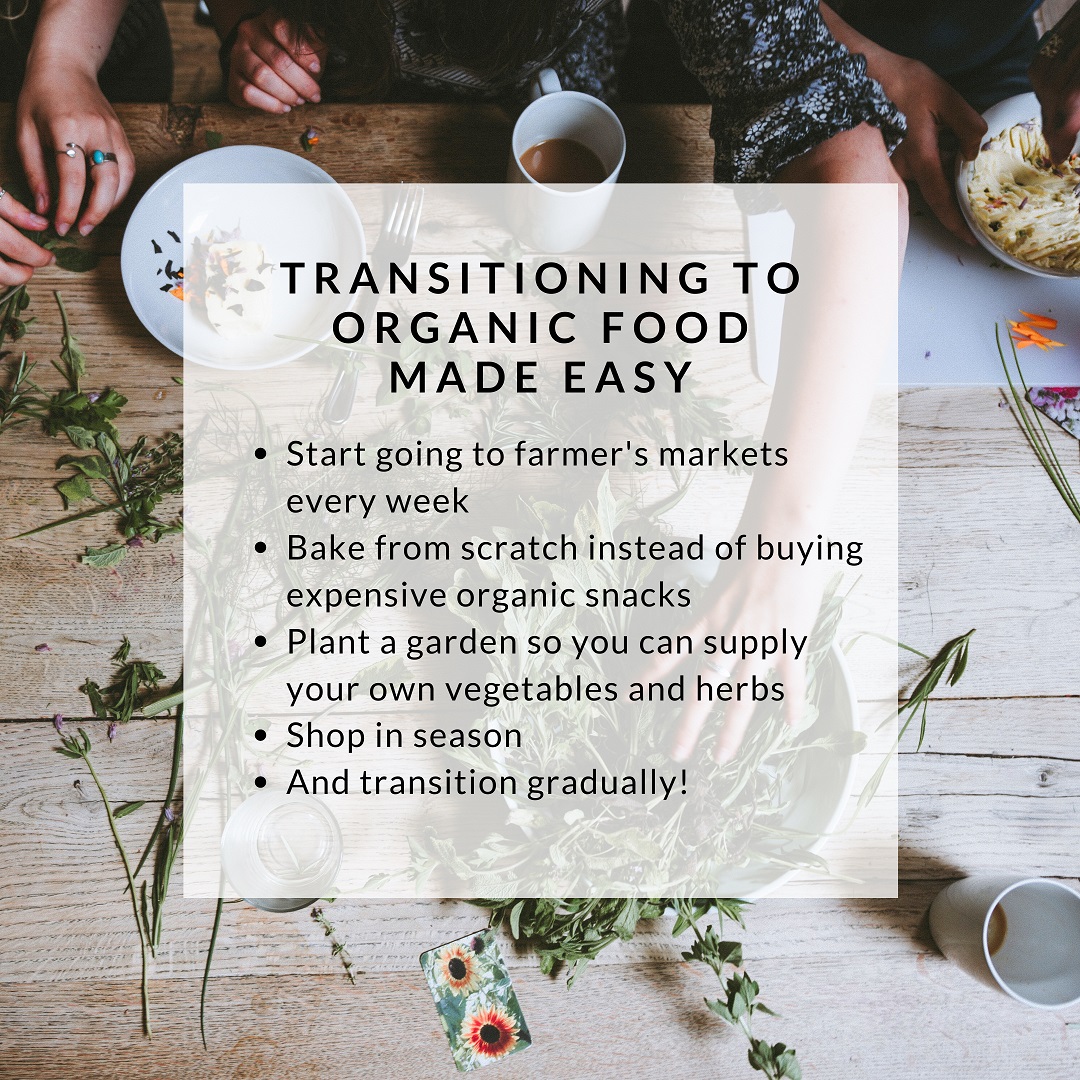
30 Jul First Steps to Go Organic
Deciding to Go Organic?
First Steps to Introducing Organic into Your Diet
Making the decision to go organic can be a little perplexing without knowing a place to start off. There are several things to consider before starting, like why are you going organic? Is it for the environment? For your health? To support small businesses? Based off these answers, you should be able to choose which products you want to start off with.
Choosing Your First Organics
Getting started can be as simple as seeing what your local grocery store carries in their organic line—the popularity of organic is driving grocery chains to offer an expanding line of organic options. You may want to start with the cheapest products you use that are available as organic for a modest cost increase. Or, start off with the Dirty Dozen fruits and vegetables that contain the highest pesticide residue. These items, in order of dirtiest as of 2020, are listed below:
- Strawberries
- Spinach
- Kale
- Nectarines
- Apples
- Grapes
- Peaches
- Cherries
- Pears
- Tomatoes
- Celery
- Potatoes
If your main concern is health-related issues from pesticides, choosing a few of these to start off with would greatly reduce your chemical intake.
Go to Farmer’s Markets
Farmer’s markets are a great way to find locally sourced, in season, and pesticide-free food. When shopping, make sure to check if the farmer’s produce is marked organic, or ask the farmers about their pesticide usage. Some farms may be “transitioning” to organic certification and by asking, you may be able to support a pesticide-free producer and expand your options. By supporting local organic farms, you are supporting a crucial trend that will reduce the pesticide burden in the Chesapeake ecosystem, along with supporting small businesses and your own health. Shopping in season is also important – by doing this, you’re saving money and helping reduce greenhouse gases by eliminating transportation from other more distant locations to bring your food. In-season produce is at the peak of its supply, so they’ll be much cheaper than other times of the year. Buying and freezing in-season produce is a good way to minimize cost, help the environment, and enjoy the bounty in winter.
You can also contact many farms to buy direct or join a CSA (Community Supported Agriculture) programs in which you buy a share of the harvest for the season—to find how to connect with organic farmers, go to the Maryland Organic Food and Farming Association (MOFFA) and access FarmMatch to find organic farms nationwide. Another resource is Fair Farms, a network in Del-Mar-Va that works for a better food system, investing in locally grown food and aids in the restoration of waterways. Many of the members of Fair Farms are organic and better for the environment. This link is a database you can also search to find organic farms by state.
Grow Your Own
As many people have turned their attention to their own back yards, they are discovering organic gardening as a way to incorporate organic food into their diets. It’s easy to start with herbs or jump into growing a late summer-fall batch of leafy greens. Buying a packet of seeds or plants from your local gardening store is inexpensive and a fun way to develop your green thumb. You don’t even need access to a plot of soil: watch this quick video on how to grow sprouts indoors in a jar —it is a great way to add a fresh, nutrient-rich green to your salads, sandwiches, and soups. Todd’s Seeds offers organic sprouting mixes, a fast-growing favorite is alfalfa sprouts.
There are a lot of ways to make going organic easy and cheaper. For more ideas to buy organic on the cheap, visit our Going Organic on a Budget webpage. Figure out what you want to start off with, then buy organic locally whenever possible, and try producing your own foods. Let us know any more tips for starting the process of going organic!